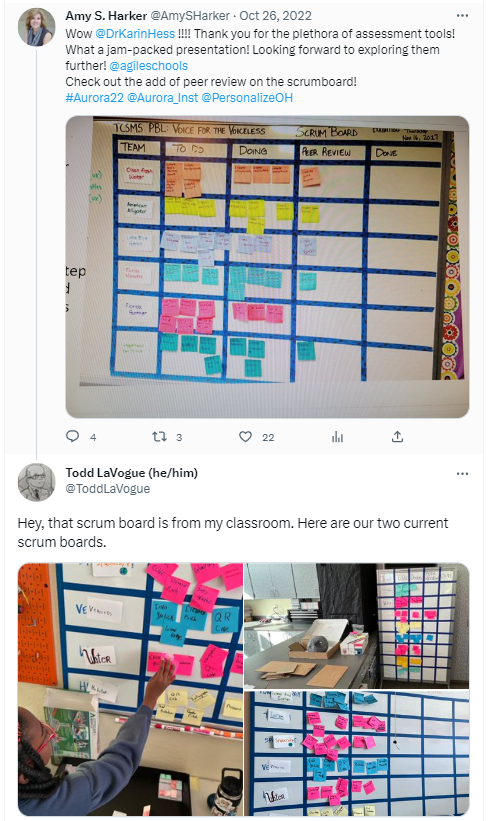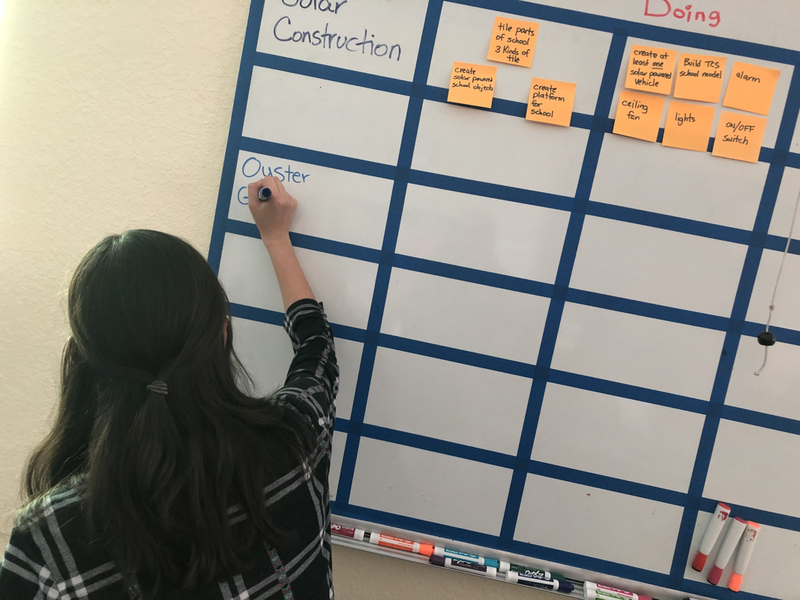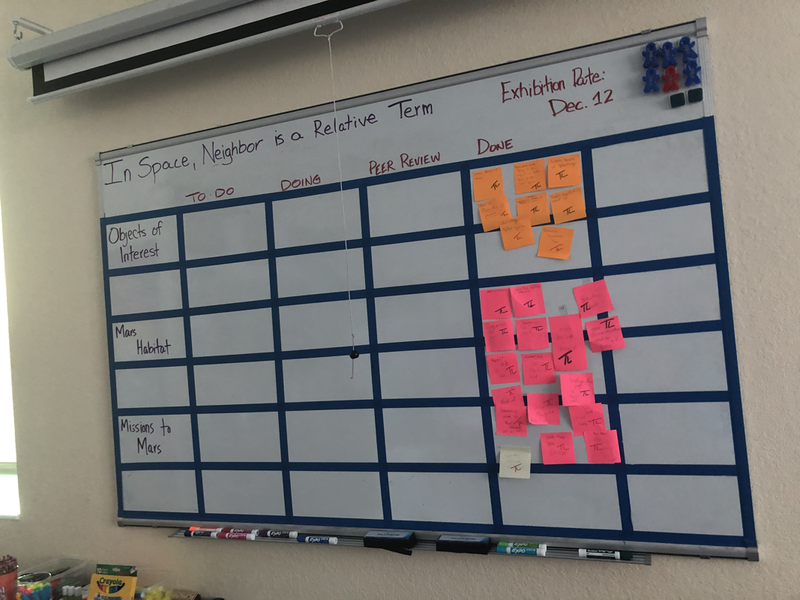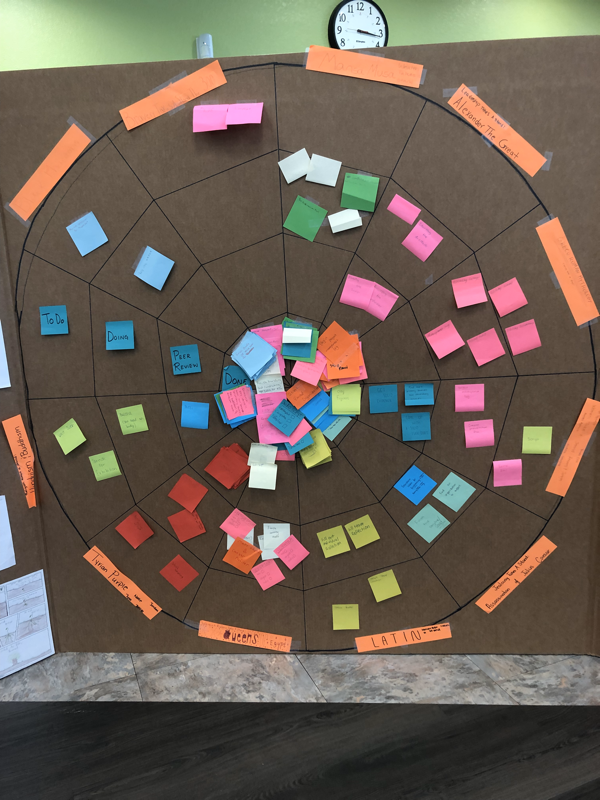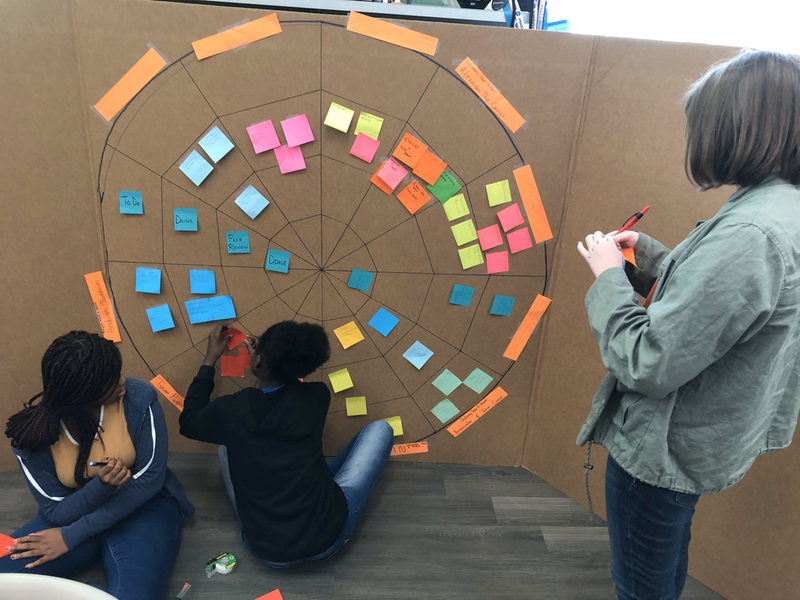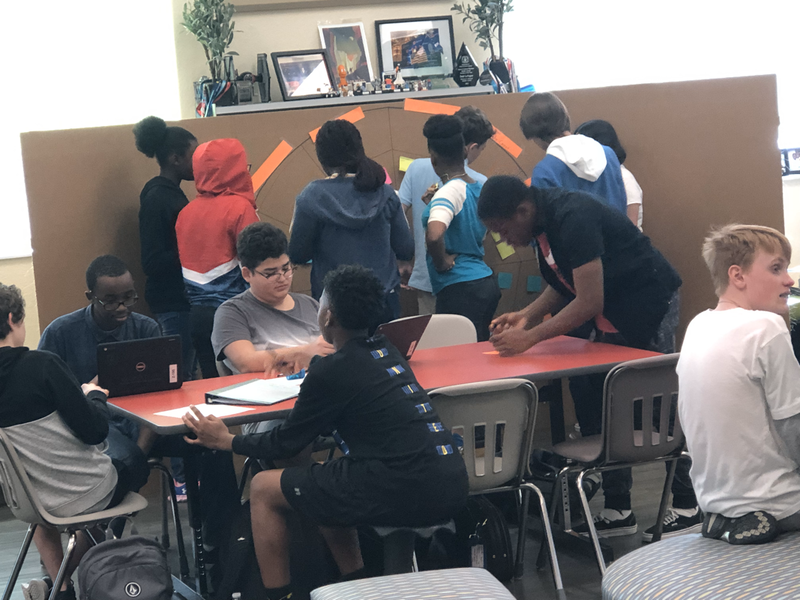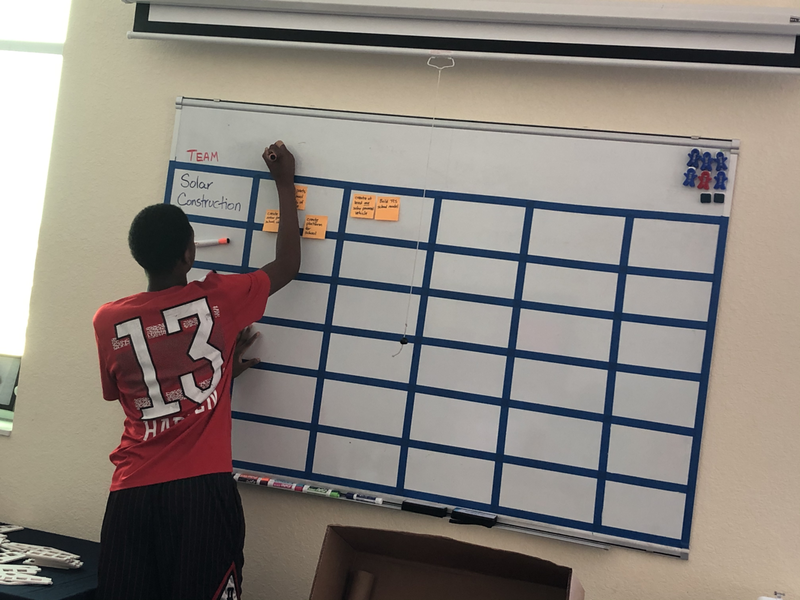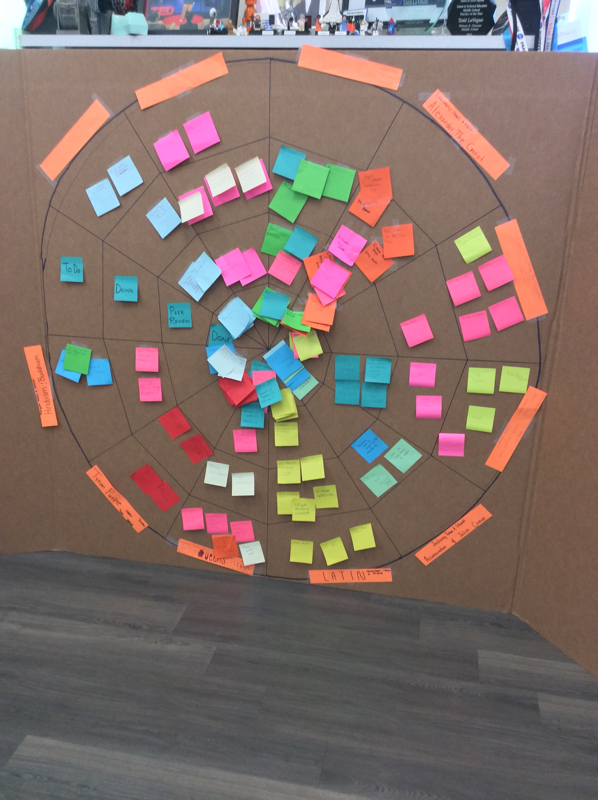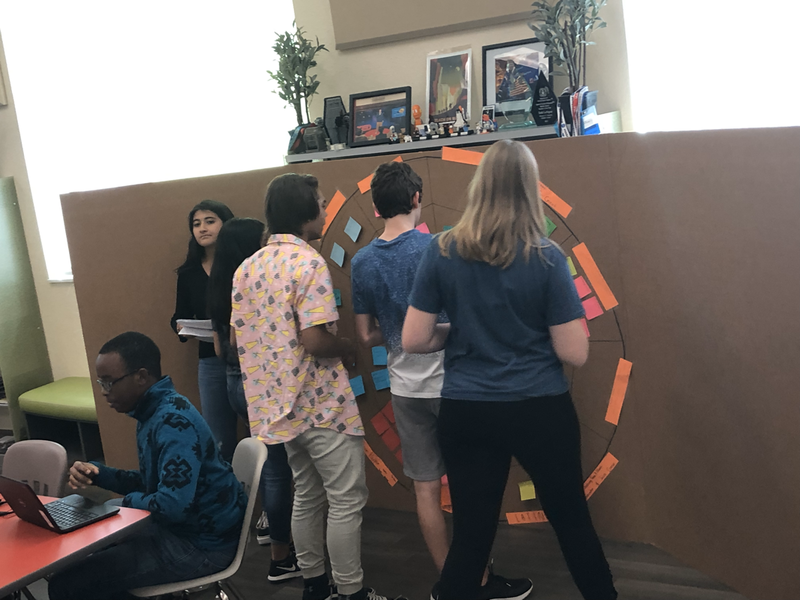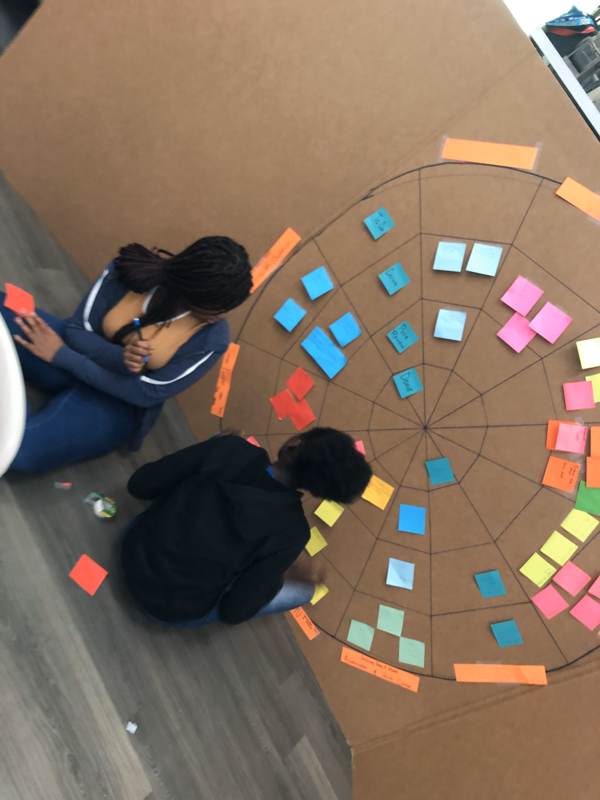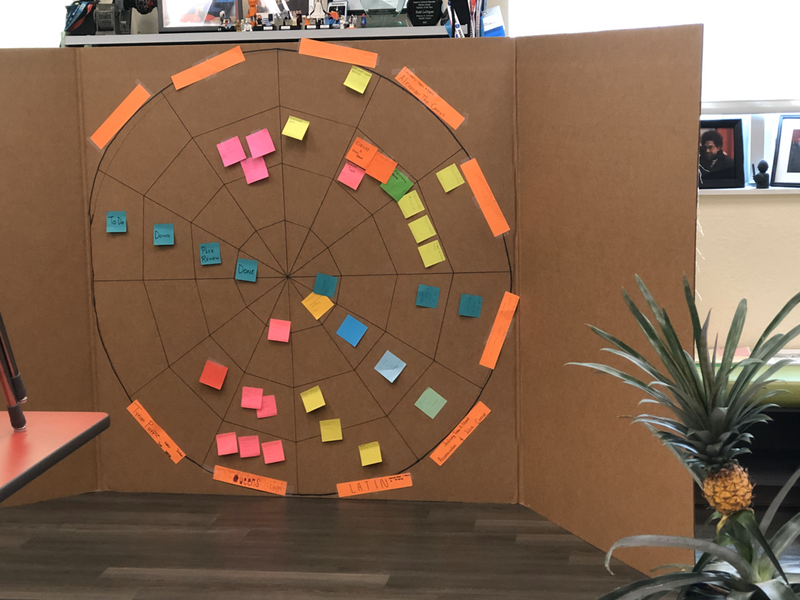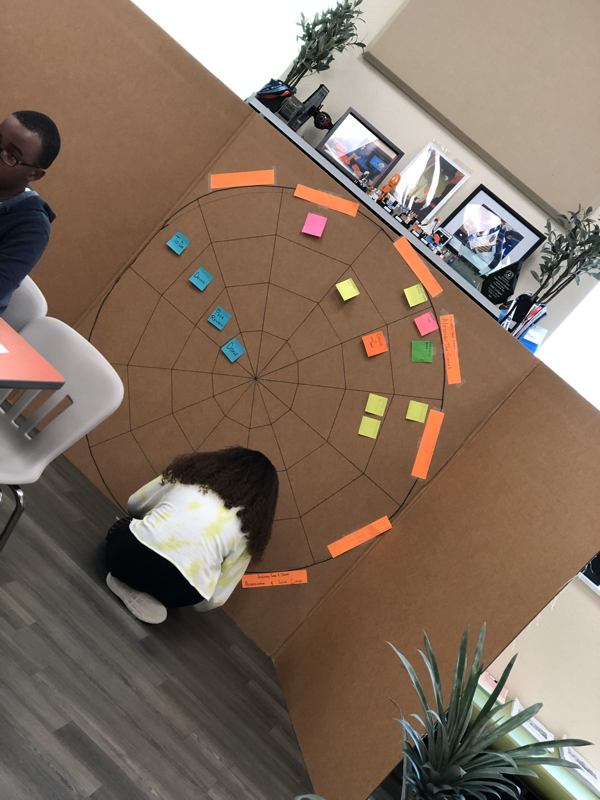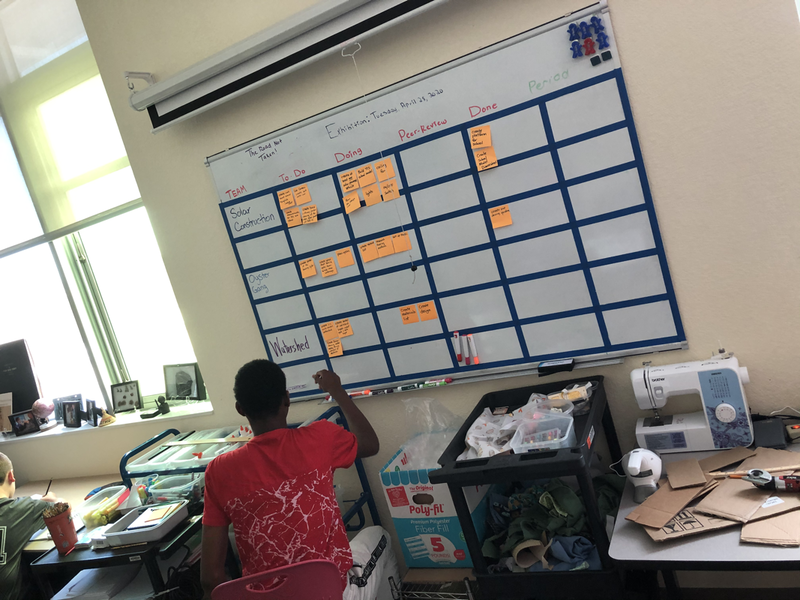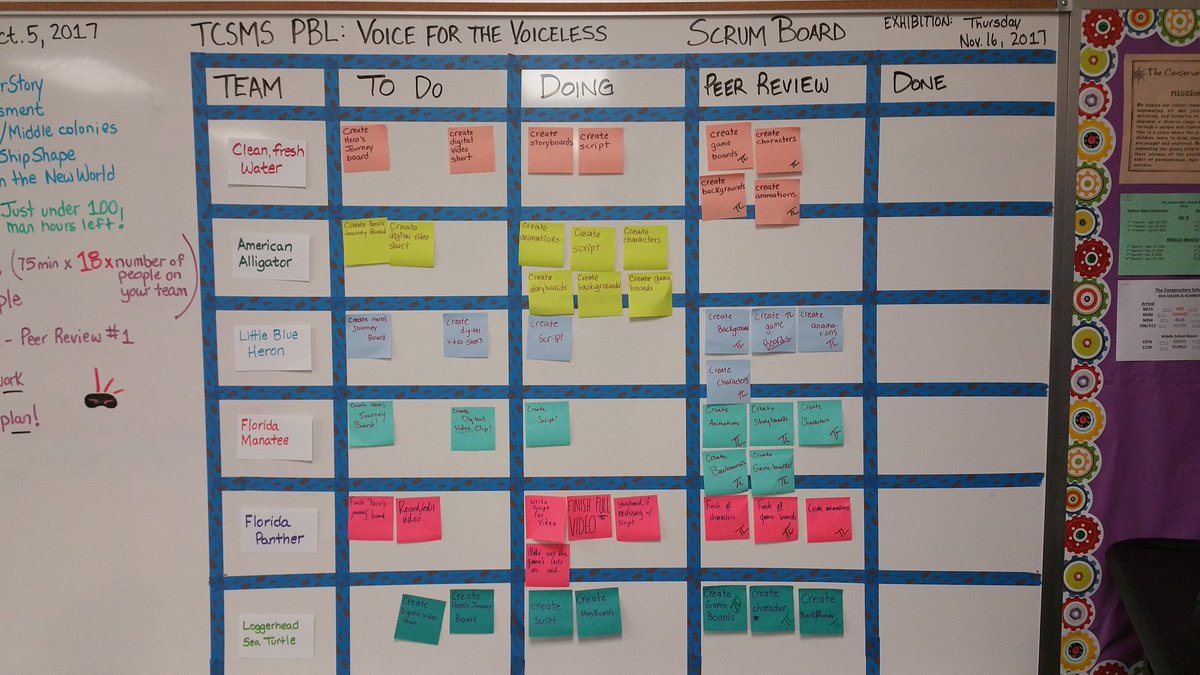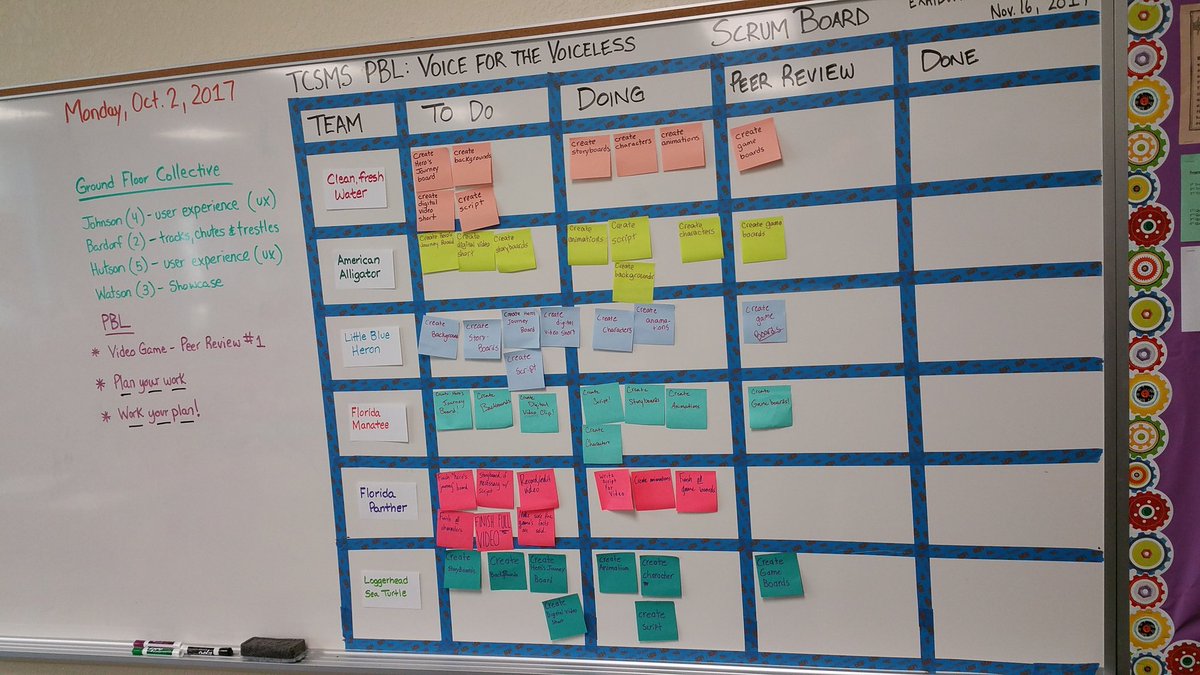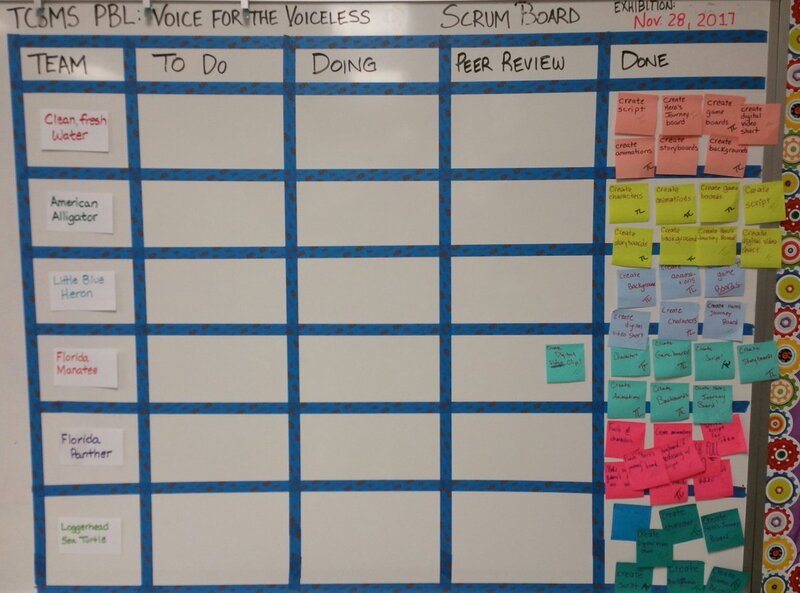Different looks, same results!
We have used our scrum boards for seven years now.
While the appearance may change our four major stages have remained the same:
To-Do
Doing
Peer Review
Done
While the appearance may change our four major stages have remained the same:
To-Do
Doing
Peer Review
Done
"It helps keep me focused”
- Isaac 8th grade
Scrum Board in the Classroom
A Scrum board is a visual tool used in the Agile project management methodology, particularly in Scrum, to track the progress of work. Here's how it can be described and used effectively in a classroom setting:
Description of a Scrum Board
Description of a Scrum Board
- Structure: It typically consists of a large board divided into columns. Common column titles are "To Do," "In Progress," and "Done," but these can be customized based on the project or lesson plan.
- Tasks: On the board, tasks are represented by cards or sticky notes. Each card contains a brief description of a task or an assignment.
- Progress Tracking: As tasks progress, the cards are moved from one column to the next, visually tracking the progress towards completion.
- Lesson Planning: Teachers can use the Scrum board for lesson planning, placing different educational activities or topics in the respective columns.
- Student Engagement: Students can actively participate by moving tasks they are working on, fostering a sense of accomplishment and visibility into what everyone is working on.
- Group Projects: For group assignments, a Scrum board helps in dividing tasks among students, tracking progress, and ensuring accountability.
- Feedback and Adaptation: It can be used for providing immediate feedback and for adapting lesson plans based on the progress and understanding of the students.
- Interactive Learning: The board makes learning more interactive and can cater to different learning styles, as it involves both visual and kinesthetic elements.
- Skill Development: It introduces students to project management and teamwork skills, preparing them for collaborative work environments.
- Transparency: The board provides transparency in classroom activities, allowing both students and teachers to see what needs to be done and what has been accomplished.
